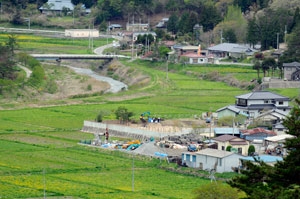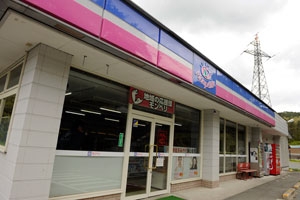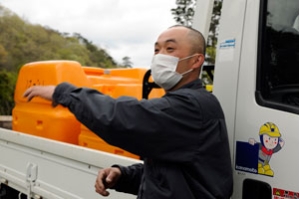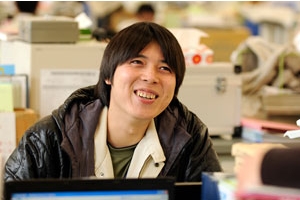With the restrictions lifted in areas of Fukushima, some residents are returning home
2012/05/28

Authorities in Fukushima Prefecture have recently reclassified parts of the restricted zone around the nuclear plant to lift a ban on those areas where radiation levels are recorded at 20 millisieverts per year or less. Among the three communities where residents have been allowed back to their homes, is Kawauchi village. But only roughly 500 out of 3,000 inhabitants have gone back and the problems that Kawauchi faces in trying to revive itself may point to more general issues ahead.
(Photo: Landscape of Kawauchi Village)

By the standards of convenience store-addicted Japan, the Monpellie, sitting on a leafy road near the river in the village of Kawauchi, is totally unremarkable.
But after a few minutes observing the steady stream of customers drawing up in their sub-compact cars or trucks and trooping in, it rapidly becomes clear that it has something special going for it: it’s virtually the only shop open in the whole place.
And there’s a good reason for that: the government last month reclassified this village of 3,000 residents as sufficiently safe for people to return here to live.
But so far, only about 500 have done so. A recent survey by the local authority says roughly an equal number are determined never to return, while slightly more – 600 – say they’re undecided.
(Photo: This shop is the only place where returned residents buy groceries.)
Coming back problematic
Coming back is deeply problematic for many, says Sachiko Mori, 71, who used to be a farmer, but has given up cultivating the land, because the radiation makes the produce impossible to sell.
“Those people who used to be farmers, now have nothing to do and although I now get a pension from the government, I have to come here to buy the vegetables which I used to grow myself.”
In order to help knit the community together again, a Red Cross community centre, set up with German assistance, will eventually be moved from its location amid temporary housing in the city of Koriyama, where most people from Kawauchi are still living.
But meanwhile there are still a variety of issues preventing significant numbers of people from coming back.
“Another factor is that people feel that the nuclear plant is not stable yet,” says Hideo Akimoto, a local government employee, who has stopped by to pick up a packet of cigarettes.
(Photo: Frog's pottery figurine rests on the desk -- it comes from a pun on the Japanese word kaeru, which means both‘frog’ and‘return.’)

Undecided majority
Some of the undecided majorities are also in evidence among those visiting the store.
“Life is too inconvenient here at the moment, because there are only one or two shops open,” says one woman, as she prepares to drive back to her temporary accommodation in Koriyama, more than an hour away. “Besides, the decontamination of my house hasn’t even started yet.”
Among the vehicles pulling up outside the store as the drivers shop for lunch boxes, is a truck laden with two bright yellow plastic water tanks and a brand new pump which looks as though it’s imported from Europe.
“The water in the tanks is used to spray people’s houses,” as part of the decontamination process, says the driver.
Just a little way down the road, we meet several groups of men who are digging away the topsoil and putting it into huge blue plastic sacks.
Pointing to the lighter coloured soil to the right hand side of one house, a workman explains: “that’s all new soil, carried over from a hill outside the village.”
The men tell us they’re all subcontracted by a company from Niigata on Japan’s west coast. One of the paradoxes here is that on the one hand, there’s high unemployment, but on the other it seems the population is ageing to such an extent that there are not enough workers for many essential tasks.
(Photo: The driver kindly explained us what were the contents of plastic water tanks.)

Encouraging return
When we visit the local administration building, a village official Masakazu Sakuma tells us the authorities are doing all they can to encourage more residents to return. They’ve enlisted the services of a frog – a pun on the Japanese word kaeru, which means both ‘frog’ and ‘return.’ But one official tells us privately, he doesn’t expect more than 60 or 70 per cent to come back.
Meanwhile, they’re also offering tax incentives and favourable policies to attract businesses. They say they’ve secured an agreement so far with one precision engineering company, which plans to set up in the village, bringing with it some 50 new jobs. But given the work still to be done decontaminating the area and people’s continuing ambivalence, nobody expects the task of reviving this fading community to be an easy one.
(Photo: Mr. asakazu Sakuma, local government officer, working at the returned town office in Kawauchi village.)















